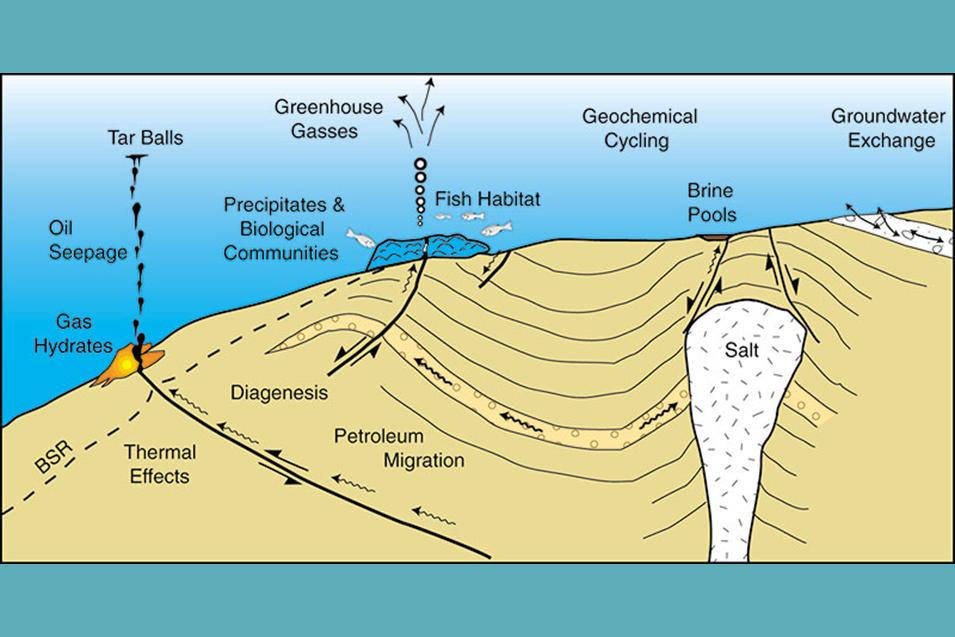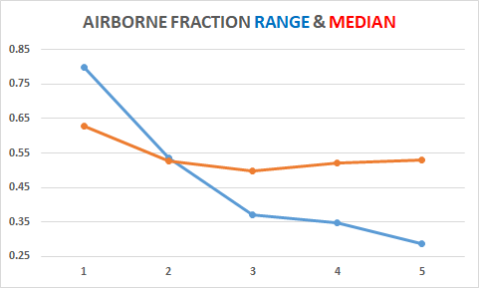Fossil Fuel Emissions and Atmospheric Composition
Posted on: December 19, 2018
[STATISTICS ISSUES IN CLIMATE SCIENCE]
[RELATED POST ON THE CARBON CYCLE]
RELATED POST: AN EXCLUSIVE RELIANCE ON FOSSIL FUEL EMISSIONS OVERLOOKS NATURAL CARBON FLOWS. [LINK]

FIGURE 1: FOSSIL FUEL EMISSIONS AND ATMOSPHERIC COMPOSITION
FIGURE 2: EMISSIONS AND CHANGE IN ATMOS-CO2 AT FIVE TIME SCALES




FIGURE 3: CORRELATION BETWEEN ΔCO2 AND EMISSIONS




FIGURE 4: SUMMARY OF AIRBORNE FRACTION

FIGURE 5: SUMMARY OF DETRENDED CORRELATION ANALYSIS

[RELATED POST ON THE CARBON CYCLE]
- Figure 1 shows that atmospheric CO2 concentration as measured at Mauna Loa has been rising steadily since 1958 while at the same time post industrial humans have been injecting increasing amounts of carbon dioxide from fossil fuels into the atmosphere. It is in this context that the usual assumption is made that observed changes in atmospheric CO2 concentration (ΔCO2) are driven by fossil fuel emissions. This assumed relationship appears to be visually validated in the left panels of the five charts in Figure 3 where changes in atmospheric carbon dioxide (ΔCO2) appear to be strongly correlated with the rate of emissions.
- The correlation was tested in a related work [LINK] where it was shown with detrended correlation analysis that there is insufficient evidence to claim that atmospheric CO2 concentration is responsive to fossil fuel emissions at an annual time scale and that therefore the attribution of rising atmospheric CO2 to emissions is without empirical support. Detrended correlation analysis extracts the portion of the observed source data correlation that derives from responsiveness at the chosen time scale by removing the portion that derives from shared trends. The motivation for this procedure is described in a related post [LINK] . Briefly, the trend is removed from the data so that only the regression residuals remain and a correlation between these residuals is used to measure the responsiveness of ΔCO2 to emissions.
- This work is a further investigation into the relationship between changes in atmospheric CO2 concentration and fossil fuel emissions. The failure of the prior study to find a responsiveness of atmospheric CO2 to fossil fuel emissions at an annual time scale leaves open the possibility that a responsiveness may exist at longer time scales. Five time scales from one year to five years in increments of one year are studied. The data for the five time scales are displayed in Figure 2 which contains five charts one for each time scale. Each chart consists of three frames. The left frame shows emissions at the time scale of the chart in gigatons of carbon equivalent (GTC). The middle frame displays the corresponding increase in atmospheric CO2 converted from parts per million in volume (ppmv) to GTC equivalent. The last frame contains the ratio of ΔCO2 to emissions. This ratio, called the “Airborne Fraction (A/F)” is considered to be a constant with a value of approximately 50%. It describes the portion of emissions that end up in the atmosphere. The spread of the Airborne Fraction appears to include the value of A/F = 0.5 and the spread appears to narrow as the time scale is increased. Curiously, a slight downward trend is seen in the A/F at all time scales. The Airborne Fraction concept appears to assume a causal relationship between emissions and change in atmospheric CO2 concentration. The results are summarized in Figure 4. The volatility of the Airborne Fraction decreases sharply from Range=0.8 to Range =0.29 as the time scale is increased from T/S=1 to T/S=5 and at the longer time scales the median A/F converges nicely to the original IPCC figure of A/F=0.5. Later claims to reduced figures of A/F=0.42 seems arbitrary and perhaps a case of circular reasoning as explained in a related post [LINK]
- The correlation analysis is presented in Figure 3. There are five charts one for each time scale. Each chart consists of two frames, a left frame that displays correlation in the source data and a right frame that shows the correlation between the detrended series. Both of these correlations rise as the time scale is increased from one to five years. At all five time scales we find a significant loss in correlation when the data are detrended. The correlation that survives into the detrended series serves as evidence of responsiveness at each of the five time scales. The survival fraction also rises as the time scale is increased from annual to five years. The results are summarized in Figure 5. Here we see that the source correlation rises from CORR=0.742 to CORR=0.921 as we increase the time scale from T/S=1 to T/S=5. The corresponding detrended correlation also rises from DETCOR=0.145 to DETCOR=0.314 with the survival fraction rising sharply from 19.5% to 34.1%.
- The higher and higher detrended correlations and survival fractions at longer time scales raise the intriguing possibility that the failure to find a responsiveness of atmospheric composition to the rate of fossil fuel emissions was an inappropriate choice of an annual time scale. Perhaps a longer time scale will resolve the issue. To test that hypothesis we present one tailed hypothesis tests for each of the five detrended correlations at the five selected time scales. Here the alternate hypothesis is that the detrended correlation is positive or HA: DETCOR>0. The corresponding null hypothesis is that is not positive or H0: DETCOR<=0. The maximum false positive error rate is set to α=0.001, much lower than the usual values of α=0.01 to α=05, in accordance with Revised Standards for Statistical Significance (Johnson, 2013) published by the NAS to address an unacceptable rate of irreproducible results in published research (Siegfried, 2010). Since five comparisons are made for the five different time scales, the probability of finding at least one significant correlation in random data is increased by a factor of five to 0.005 (Holm, 1979). The results of the hypothesis tests are presented in Figure 5. Here EFFN=effective value of the sample size corrected for time scale which decreases from EFFN=60 to EFFN=12 as the time scale is increased from T/S=1 to T/S=5 to account for residual unique information in the time series. The procedure and rationale for this computation are described in a related work [LINK] . Along with the effective sample size, the degrees of freedom also falls since in this case degrees of freedom is computed as DF=EFFN-2. Thus, although the T-statistic rises somewhat as the time scale is increased from T/S=1 to T/S=5, none of the five PVALUEs is low enough to reject H0 even at alpha=0.05 where with the Holm adjustment for multiple comparison, a p-value of pval=0.01 would be required. We therefore fail to reject H0: DETCOR<=0 and conclude that the data do not provide evidence that atmospheric CO2 concentration is responsive to fossil fuel emissions at any of the time scales studied. Thus the interpretation of the Airborne Fraction in terms of the contribution of fossil fuel emissions to ΔCO2 requires the use of circular reasoning with an assumed responsiveness that is not found in the data. This issue is described in greater detail in a related post. [LINK] .
- A rationale for the inability to relate changes in atmospheric CO2 to fossil fuel emissions is described by Geologist James Edward Kamis in terms of natural geological emissions due to plate tectonics [LINK] and by Viv Forbes in terms of the natural Henry’s Law equilibrium with much larger store of CO2 in the ocean [LINK] . The essential argument is that, in the context of much larger natural flows of carbon dioxide and other carbon based compounds, it requires circular reasoning to describe changes in atmospheric CO2 only in terms of fossil fuel emissions. It is shown in a related post, that in the context of large uncertainties in carbon cycle flows, it is not possible to detect the presence of fossil fuel emissions without the help of circular reasoning [LINK] .
- Carbon cycle flows cannot be directly measured and they must therefore be inferred. These inferred carbon cycle flows contain large uncertainties. The essence of this argument is that the in climate science mass balance of the carbon cycle with and without fossil fuel emissions, the declared uncertainties in carbon cycle flows are ignored. In the related post cited above [LINK] it is shown that when the declared uncertainties are taken into account, the much smaller fossil fuel emissions cannot be detected net of uncertainties in the much larger carbon cycle flows because the carbon cycle balances with and without fossil fuel emissions within its uncertainty bounds.
- Circular reasoning in this case can be described in terms of the “Assume a spherical cow” fallacy [LINK] which refers to the use of simplifying assumptions needed to solve a problem that change the context of the problem so that the solution no longer answers the original research question. In the case of climate science the corresponding spherical cow assumption is “assume that there are no uncertainties in carbon cycle flows and no geological flows of carbon” [LINK] .
- The results of detrended correlation analysis at five time scales shows that the failure to find a responsiveness of atmospheric composition to fossil fuel emissions in a related work [LINK] cannot be ascribed to the annual time scale used in the study as the result is validated at longer time scales to the point of diminishing returns.
- We conclude that atmospheric composition specifically in relation to the CO2 concentration is not responsive to the rate of fossil fuel emissions. This finding is a serious weakness in the theory of anthropogenic global warming by way of rising atmospheric CO2 attributed to the use of fossil fuels in the industrial economy; and of the “Climate Action proposition of the UN that reducing fossil fuel emissions will moderate the rate of warming by slowing the rise of atmospheric CO2. The finding also establishes that the climate action project of creating Climate Neutral Economies, that is Economies that have no impact on atmospheric CO2, is unnecessary because the global economy is already Climate Neutral.



No comments:
Post a Comment